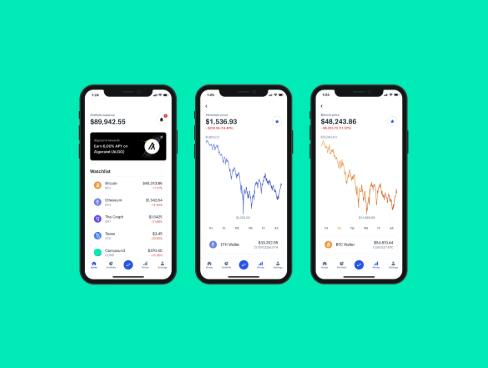How Long Does It Take to Develop a Crypto Wallet?

The rise of cryptocurrency and blockchain technology has made crypto wallets a central part of the digital finance ecosystem. Whether you’re a developer, business owner, or simply interested in the tech, understanding how long it takes to create a crypto wallet is essential. The time required to develop a crypto wallet depends on several factors, including the complexity of the wallet, features needed, platform, and security measures.
In this blog, we’ll explore what goes into developing a crypto wallet and how long the process typically takes.
What is a Crypto Wallet?
A crypto wallet is a digital tool used to store, manage, and interact with cryptocurrency. It functions similarly to a traditional wallet, but instead of holding physical currency, it stores private keys that give users access to their digital assets. Crypto wallets can be:
- Hot Wallets (connected to the internet for frequent access)
- Cold Wallets (offline, offering higher security for long-term storage)
- Mobile, Web, and Desktop Wallets (depending on the platform you choose)
Each wallet offers various functionalities, including sending and receiving cryptocurrencies, managing multiple assets, and accessing decentralized applications (dApps).
Factors Influencing Development Time
- Type of Crypto Wallet
The complexity of the wallet plays a huge role in the timeline. For instance:- Basic wallets that only support one type of cryptocurrency (e.g., Bitcoin) are relatively quicker to develop.
- Multi-currency wallets supporting multiple digital assets, such as Bitcoin, Ethereum, and tokens on different blockchains, require more time and resources.
- Hardware wallets or cold wallets require more time for developing both the software and secure physical components.
- Platform and Compatibility
The platform you choose to build the wallet on—iOS, Android, web, or desktop—also impacts development time. Native mobile apps generally take longer than web-based wallets because mobile platforms have stricter guidelines and unique technical challenges. - Features and Functionality
The more features you want in your wallet, the longer it will take to build. Common features include:- Private key management (creating, storing, and accessing private keys securely)
- Multi-signature support
- Security features (like two-factor authentication or biometric authentication)
- Integration with decentralized exchanges (DEXs)
- Integration with hardware wallets
- Custom token support (for NFTs or tokens not on major blockchains like Ethereum)
Adding extra functionality increases both development time and the need for rigorous testing.
- Security Measures
Given that crypto wallets handle sensitive information and digital assets, security is crucial. Implementing the best encryption protocols, multi-layered authentication systems, and anti-fraud measures can take time. - Testing and Compliance
Once development is complete, you’ll need to spend significant time on testing to ensure the wallet works flawlessly. Comprehensive security audits are essential to avoid vulnerabilities. Additionally, depending on your jurisdiction, you may need to meet regulatory standards, which can add extra time. - Third-party Integrations
If your crypto wallet needs to integrate with third-party services like payment processors or blockchain APIs, this can extend development time as you’ll have to manage and ensure compatibility with each integration.
Development Phases and Timelines
Here’s a breakdown of the typical stages involved in developing a crypto wallet:
- Planning and Research (1-2 weeks)
This initial phase involves defining the wallet’s goals, features, and target audience. A lot of time goes into choosing the right blockchain(s), considering user experience, and deciding on security protocols. - Designing the User Interface (UI) and User Experience (UX) (2-4 weeks)
Creating an intuitive, attractive, and secure design is essential. Users should be able to navigate easily, and the wallet should be easy to use while maintaining robust security. This phase may take longer for more complex wallets with more advanced functionality. - Backend Development (4-6 weeks)
The backend deals with the core functionality of the wallet, including the interaction with blockchains and securing private keys. This stage involves writing the core logic and integrating blockchain APIs. The complexity of the wallet’s features will determine how long this phase takes. - Frontend Development (4-6 weeks)
In this phase, developers create the user-facing parts of the wallet, including designing the interface and implementing the features defined earlier. This part may overlap with backend development, but it’s crucial for ensuring a smooth user experience. - Security Implementation (2-4 weeks)
The security of a crypto wallet cannot be overstated. Developing robust security features like encryption, multi-signature support, and secure storage will add several weeks to the development process. - Testing (4-6 weeks)
This phase includes both functional and security testing. The wallet needs to be free from bugs, offer smooth performance, and ensure all transactions are secure. This phase is critical and could involve multiple iterations based on feedback. - Deployment and Maintenance (Ongoing)
After launching the wallet, the work doesn’t end. Continuous maintenance is needed for bug fixes, updates, and keeping up with evolving security standards.
Estimated Timeline for Developing a Crypto Wallet
- Basic Crypto Wallet (1-2 cryptocurrencies, minimal features): 2-3 months
- Multi-Currency Wallet (supports a range of cryptocurrencies, medium-level features): 4-6 months
- Full-Featured Crypto Wallet (advanced features like multi-signature support, integration with DEXs, mobile and desktop versions): 6-12 months
- Custom Hardware Wallet: 12-18 months
Conclusion
The time required to develop a crypto wallet can vary significantly depending on the features, platforms, and security measures involved. While a basic wallet can be created in as little as two to three months, more complex solutions can take up to a year or more. It’s important to plan carefully and allow enough time for thorough testing and security audits to ensure a safe and user-friendly product.
If you’re planning to develop a crypto wallet, consider your goals and budget, and consult with experienced blockchain developers to create a secure and scalable solution.
#crypto wallet development,
#howtodevelopacryptowallet, #cryptowalletdevelopmenttimeline, #buildacryptowallet, #mobilecryptowallet development, crypto wallet security, blockchain wallet development, cryptocurrency wallet creation, crypto app development, multi-currency wallet, custom crypto wallet
